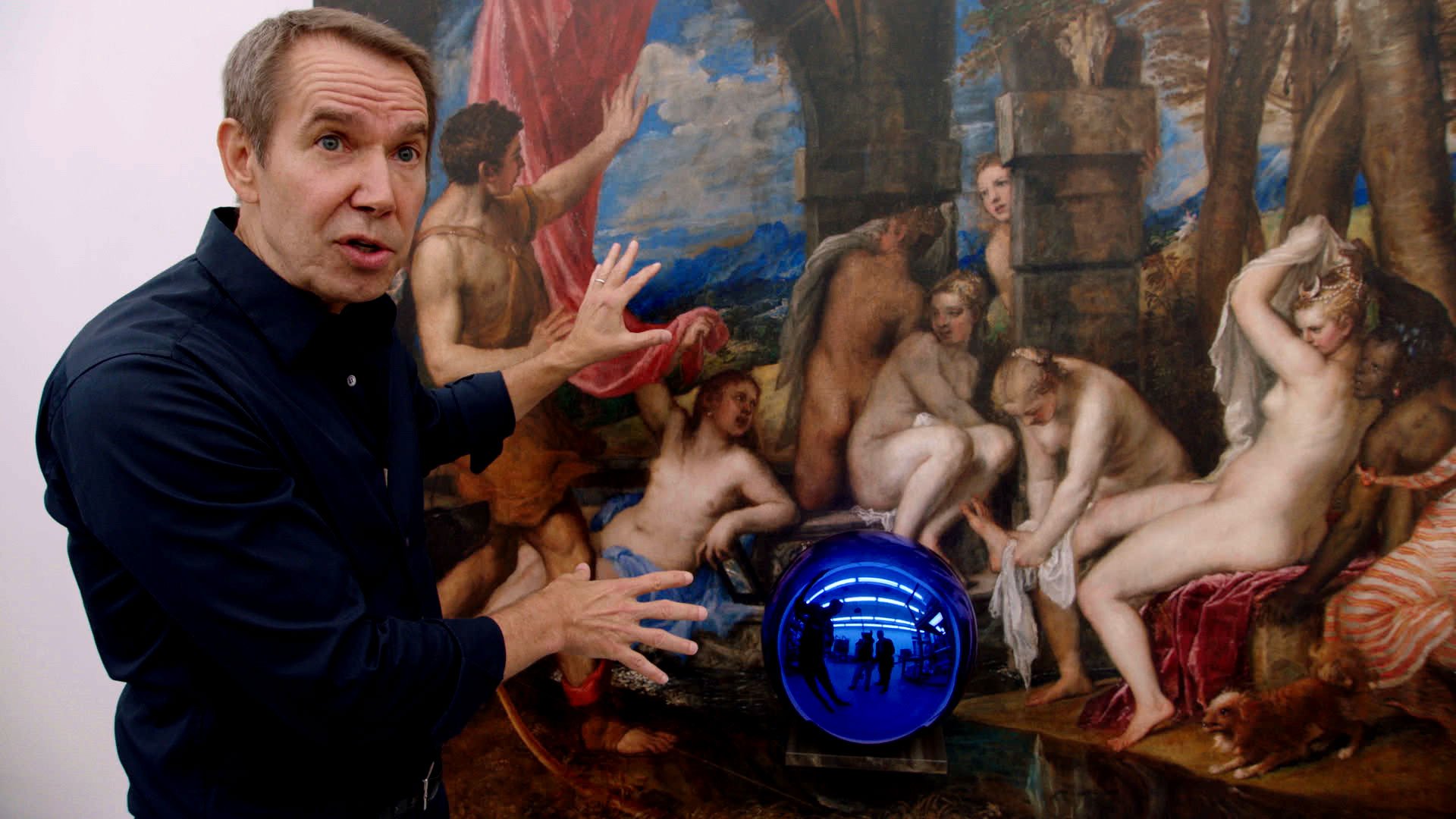
Although Jeff Koons’s name has long been synonymous with massive prices, massive scale, and a massive in-house studio operation, perceptions about at least one of these are changing.
For the fourth time since 2015, Koons significantly cut back his staff of studio assistants in tandem with a move to a new studio earlier this week. And while details are still coming into focus, the shakeup reflects an artist moving further and further away from a centralized, manpower-driven structure toward a decentralized, automation-driven one.
According to sources close to the matter, roughly 30 workers in Koons’s painting department were let go this Monday, and layoffs continued in the sculpture department the following day. The painting department dropped from 40 employees to between six and 10, including painters who also had at least some managerial responsibilities. Only “a few” staffers were reportedly left in both the sculpture and 3D design departments. All told, one source estimated the total remaining staff size to be in the vicinity of 20 people. Emails and a phone call to the studio requesting comment were not returned.
The new cuts leave a drastically leaner production team than Koons employed just a few years ago. His painting department alone had swelled to nearly 100 staffers in the lead-up to his “Gazing Ball” exhibition at Gagosian in 2015. Over the next year, around 50 assistants were reportedly dismissed in two rounds of layoffs. Two years later, the mega-artist cleaved the size of his painting department from nearly 60 assistants to around 30.
This time around, sources say, several employees were placed on unpaid time off before the holidays. Those laid off this week were notified in person on Monday and Tuesday but were given no reason for the decision. They received no severance pay beyond their last day’s wages. At least one former assistant born abroad posted on social media that they would now be left to confront the prospect of losing their work visa.
Jeff Koons, Seated Ballerina (2017). © Jeff Koons, courtesy of Tom Powel Imaging/PRNewsfoto/Tishman Speyer/Kiehls.
The Real Estate Relationship
The cuts followed the relocation of the artist’s studio from 601 West 29th Street—a sprawling space Koons occupied and extensively remodeled over 18 years—to what one source described as “dramatically smaller” spaces at 475 10th Avenue, just north of Hudson Yards. ARTnews reported earlier that Koons had signed a lease on the eighth and tenth floors of the building. This would put the artist just a few stories above gallery mainstay Sean Kelly, who has for years occupied the building’s ground level.
Koons lost his 10,000-square-foot 29th Street space, where he infamously modeled nude in its custom-built gym for a Vanity Fair spread, due to owner Douglaston Developments’ plans to rezone the property to erect a new dual-tower mixed-use complex.
The real-estate pressures helped trigger anxieties among staff about the possibility of cutbacks prior to Christmas, according to one source. “Just weeks before they needed to vacate the 29th Street address, they did not have a new studio lease,” the source wrote by email, also noting that the 10th Avenue location “doesn’t currently have a working studio area” for the sculpture department.
Koons’s new digs may seem all the more jarring to those who remember that, in 2015, he spent $23.7 million to acquire three adjacent properties along 52nd Street in Hell’s Kitchen. However, those spaces apparently remain unready to host Koons’s studio operation.
According to real estate records, six different building-alteration proposals for 620 West 52nd Street—one of the addresses in Koons’s Hell’s Kitchen troika—were disapproved in 2018. No additional proposals have been submitted since August 1.
Jeff Koons, Liberty Bell (2006–14). Photo: Benjamin Sutton.
Remote Control
Koons’s downsizing gels with the evolution of his practice, which has grown increasingly dependent on offsite enterprises and collaborations with outside consultants. In 2012, Koons opened a high-tech stone-cutting facility in Morrisville, Pennsylvania, called Antiquity Stone for the sole purpose of fabricating his own work. As of 2015, Antiquity Stone comprised 30 employees, two robots, and 12 computer-operated stone-cutting machines costing between $200,000 and $600,000 each.
The facility is still in operation today. As of publication time, it had nine listings for open positions online, ranging from a CAM/CNC programmer that would command $70,000 to $120,000 annually to a stone finisher-sculptor position paying $15 to $18 per hour. The former listing emphasizes that Antiquity Stone is seeking to fill these vacancies “because of continued growth.”
Koons has also enlisted an ever-mounting coterie of advisers and subcontractors to execute his painstaking works. As detailed in a 2014 Vanity Fair piece, the creation of Koons’s Liberty Bell involved specialists in locations stretching from Germany to Walla Walla, Washington and included a metallurgist, a structured-light scanner, separate millers for wood and metal, and more.
Koons has also been collaborating with Neil Gershenfeld of MIT’s Center for Bits and Atoms, described as “an interdisciplinary initiative exploring the boundary between computer science and physical science” that “turn[s] data into things, and things into data.” (Koons is listed as one of the center’s sponsors.)
Still, despite the latest dramatic changes in the artist’s studio structure, some close Koons-watchers may not be surprised. In a profile in the South China Morning Post last spring, Koons was unequivocal about his desire to downsize. “There’s definitely a staff I’d like to keep,” he said. “But the idea to have a big, sprawling studio is not necessarily something I’d like to maintain.”
For a man renowned for his banalities, these words, it seems, were worth listening to. The only question is how far he will follow them.